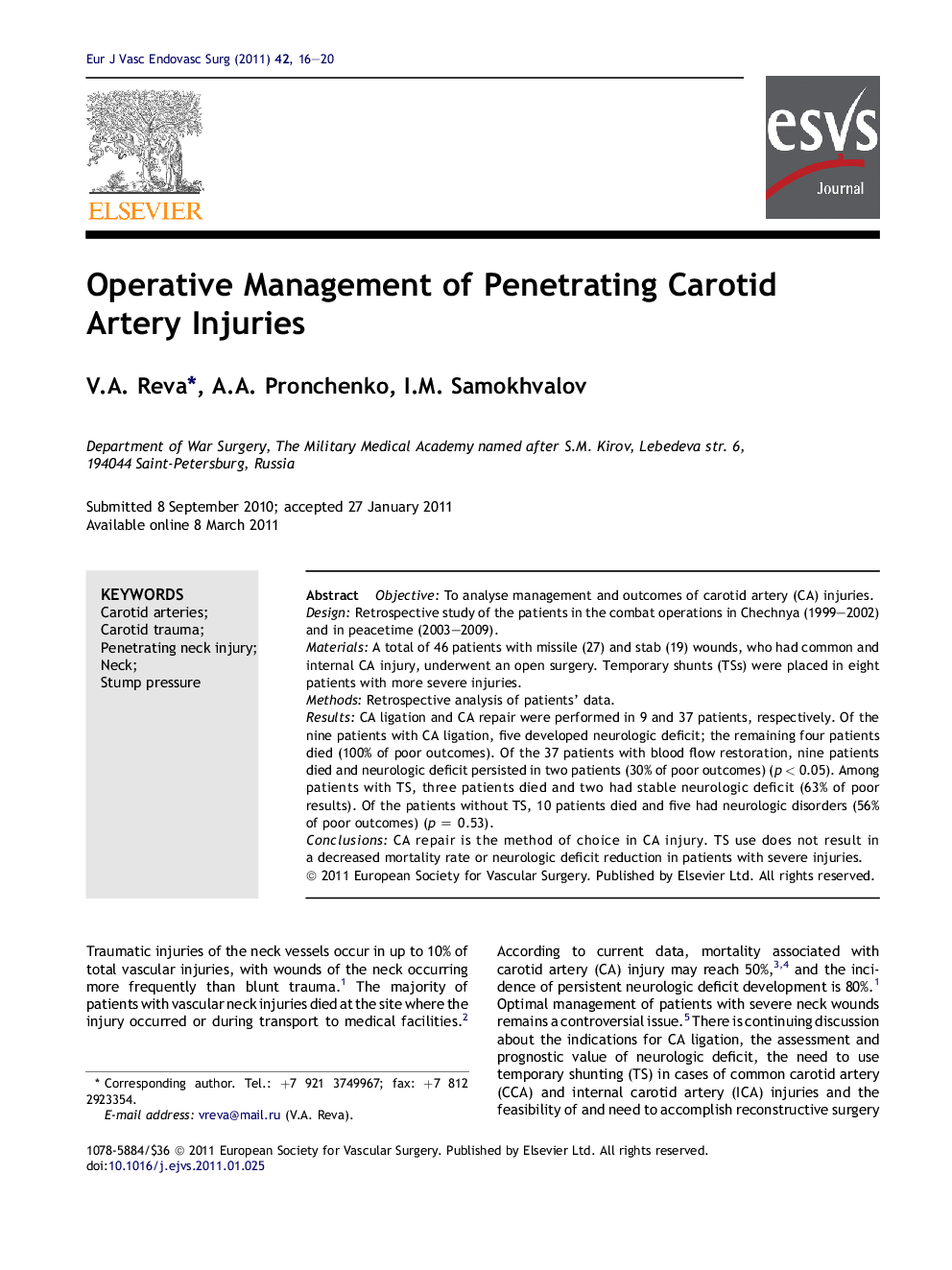| Article ID | Journal | Published Year | Pages | File Type |
|---|---|---|---|---|
| 2912411 | European Journal of Vascular and Endovascular Surgery | 2011 | 5 Pages |
ObjectiveTo analyse management and outcomes of carotid artery (CA) injuries.DesignRetrospective study of the patients in the combat operations in Chechnya (1999–2002) and in peacetime (2003–2009).MaterialsA total of 46 patients with missile (27) and stab (19) wounds, who had common and internal CA injury, underwent an open surgery. Temporary shunts (TSs) were placed in eight patients with more severe injuries.MethodsRetrospective analysis of patients’ data.ResultsCA ligation and CA repair were performed in 9 and 37 patients, respectively. Of the nine patients with CA ligation, five developed neurologic deficit; the remaining four patients died (100% of poor outcomes). Of the 37 patients with blood flow restoration, nine patients died and neurologic deficit persisted in two patients (30% of poor outcomes) (p < 0.05). Among patients with TS, three patients died and two had stable neurologic deficit (63% of poor results). Of the patients without TS, 10 patients died and five had neurologic disorders (56% of poor outcomes) (p = 0.53).ConclusionsCA repair is the method of choice in CA injury. TS use does not result in a decreased mortality rate or neurologic deficit reduction in patients with severe injuries.
